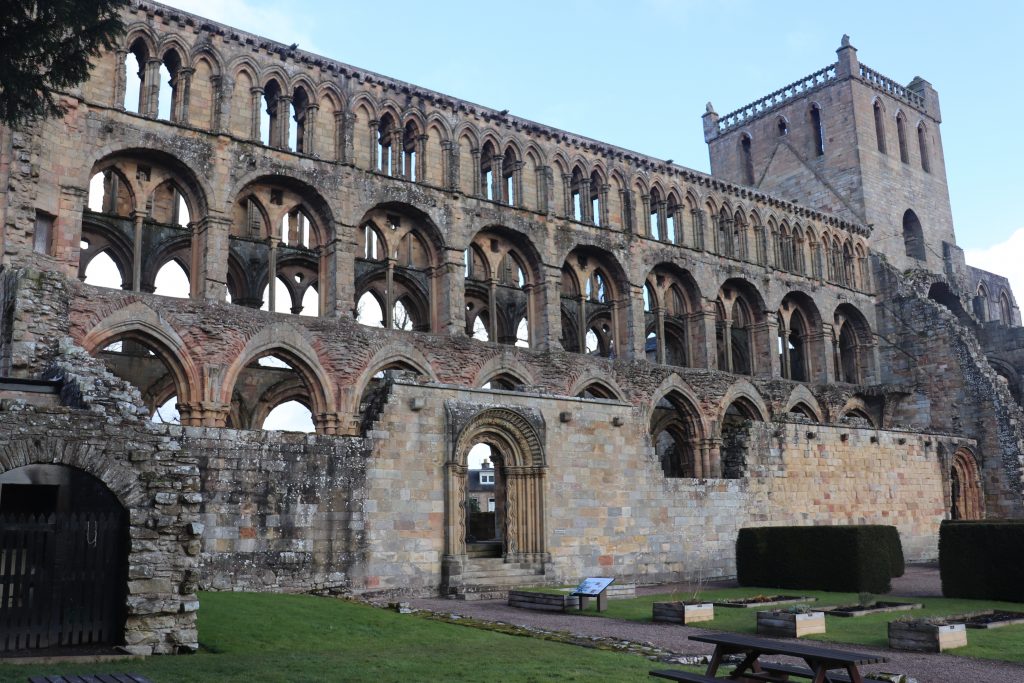The Scottish Borders was a magnet for monks in medieval times – truly men on a mission. In a region with ancient Christian traditions and lured by the promise of royal patronage they set up four mighty monastic institutions at Jedburgh, Melrose, Drybrough and Kelso.

In the years before he was crowned king of Scotland, David 1 masterminded a plan to set up monastic centres throughout the Borders and was responsible for populating them with colonies of monks from England and the Continent.
Jedburgh Abbey was built from designs inspired by Europe’s finest churches and its roots trace back to 1118 when a group of Augustans from the Abbey of St-Quentin, at Beauvais north of Paris, set out for a new life in the Borders – a sort of early twinning arrangement – and served a royal castle located in the town.
The priory they established was given large bequests of lands and fisheries by David l and duly prospered. The men of the monastic orders were every bit as good at business as they were in upholding the faith. It was raised to abbey status around 1154.
David’s successor, Malcolm died at Jedburgh Abbey in 1165 and Alexander lll was married there to Yolande of Dreux, another notable French connection.
There is nothing quite like a great ruin for visitor appeal and Jedburgh’s 12th century Abbey ranks alongside the best of them, providing a breathtaking welcome for those arriving in the town from the south.
Down the centuries, not all visitors were welcome.
As a gateway town to the Borders and Scotland, Jedburgh bore the brunt of many unwelcome visits from invading English armies.
During incursions made in the 1540’s Jedburgh was reduced to ruins by Henry the Eighth’s armies. It was a time that became known as the ‘rough wooing’ resulting from the Scots refusal to ratify the betrothal of the infant Mary Queen of Scots to his son Edward, then at the tender age of seven.
It was fatally destroyed after a series of major raids from south of the Border in 1523 and 1544. The Protestant Reformation of 1560 led to Jedburgh’s final demise as a monastic institution.
Jedburgh Abbey, however, is still an imposing building. The great abbey church of St Mary the Virgin stands almost entire and the eastern end has Romanesque architecture of the highest quality.
Still used on special occasions it is home to a museum housing historic artifacts from the area and run by Historic Environment Scotland.
Ample free parking is located close to Jedburgh Abbey and free audio tours available to use on-site in English, French, German, Italian and Spanish.
More at www.historicenvironment.scot
Leave a Reply
You must be logged in to post a comment.